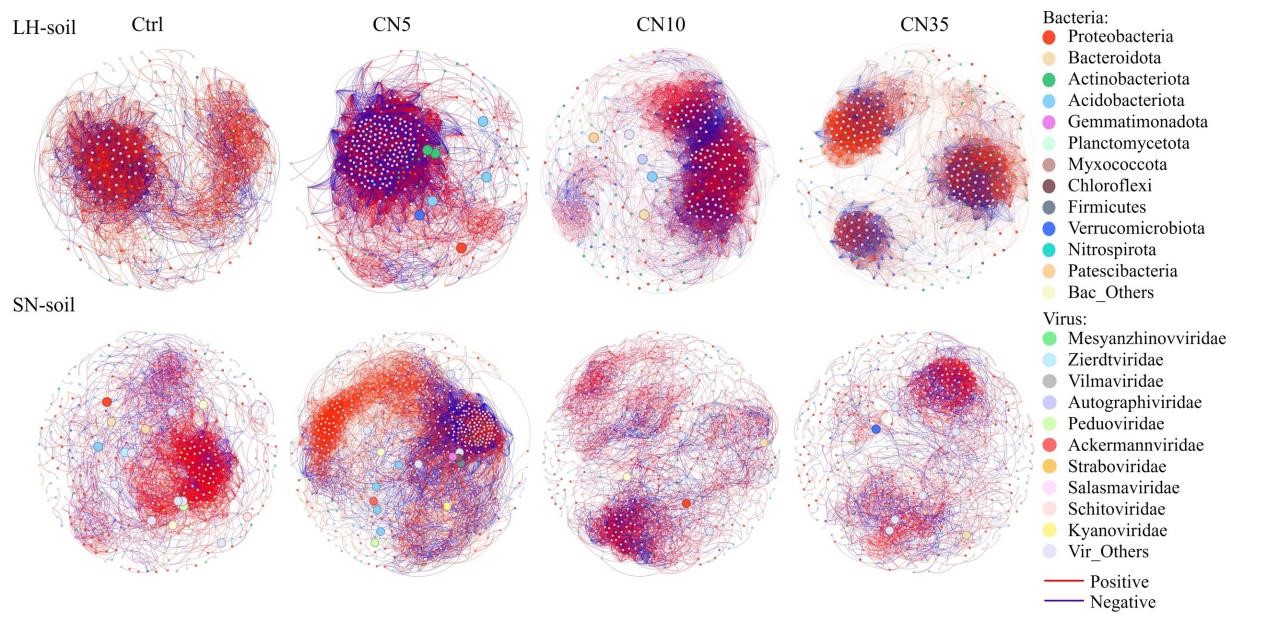Soil Viruses Regulate Carbon Cycling Based on the Carbon-to-Nitrogen Ratio in Soil
Researchers at the Institute of Applied Ecology, Chinese Academy of Sciences (CAS), have provided new insights into how soil viruses influence microbial activity and carbon storage under different nutrient conditions. The study clarifies how variations in the carbon-to-nitrogen (C/N) ratio shape viral behavioral strategies and their ecological roles in soil carbon turnover, a finding that may refine models of global carbon cycling and climate feedbacks.
Soils are among the planet’s largest carbon pools. Microorganisms drive the accumulation and stabilization of soil organic carbon (SOC) by decomposing organic matter and forming microbial residues. However, viruses, key components of microbial communities in soil ecosystems, remain an overlooked factor in this process. The balance of carbon and nitrogen in soil not only determines plant productivity but also regulates microbial metabolism and the release or retention of organic carbon. While previous studies have examined the effects of plant litter, microbial composition, and environmental conditions on carbon and nitrogen dynamics, the influence of viruses has been largely unexplored.
To address this research gap, a team led by Dr. LIANG Xiaolong from the CAS Institute of Applied Ecology conducted a substrate addition experiment, coupled with metagenomic sequencing techniques. The researchers examined how viral communities in two divergent soils, collected from the Songnen and Liaohe Plains, responded to external substrate inputs with varying C/N ratios. Their paper, titled Exogenous carbon-to-nitrogen imbalance drives soil viral roles in microbial carbon mineralization and necromass accrual, was published in Soil Biology & Biochemistry.
The researchers found that soil viruses are highly sensitive to changes in C/N ratios. External inputs with different C/N balances reshaped viral diversity and community composition. In the nutrient-poor soils of the Liaohe Plain, a higher C/N ratio promoted the dominance of lytic viruses, which actively infect and destroy host bacteria. In contrast, in the organic matter–rich soils of the Songnen Plain, lysogenic viruses that integrate into host genomes were more adaptive.
The researchers also demonstrated that viral life cycle strategies, together with soil organic matter content, jointly determine how viruses regulate carbon turnover. In low-organic soils, viral lysis processes enhanced microbial respiration and accelerated carbon mineralization, whereas in high-organic soils, viral activity promoted the accumulation of microbial residue carbon, stabilizing soil carbon pools.
These results challenge conventional carbon-cycle models that emphasize plant and microbial processes while neglecting viral contributions. The research emphasizes that the C/N ratio is not only a chemical property of plant residues but also a key ecological factor governing subsurface virus–host interactions. This finding introduces a new variable for improving predictions of carbon storage and greenhouse gas emissions. As climate warming and nitrogen deposition continue to alter nutrient balances, virus-driven carbon release could amplify, potentially impacting atmospheric CO2 concentrations.

Figure 1. Network of interactions between soil viruses and bacteria, illustrating viral influences on microbial carbon cycling under different carbon-to-nitrogen ratios (Image by WANG Shuo).



